Review Skolkovo Robotics International Conference 2016
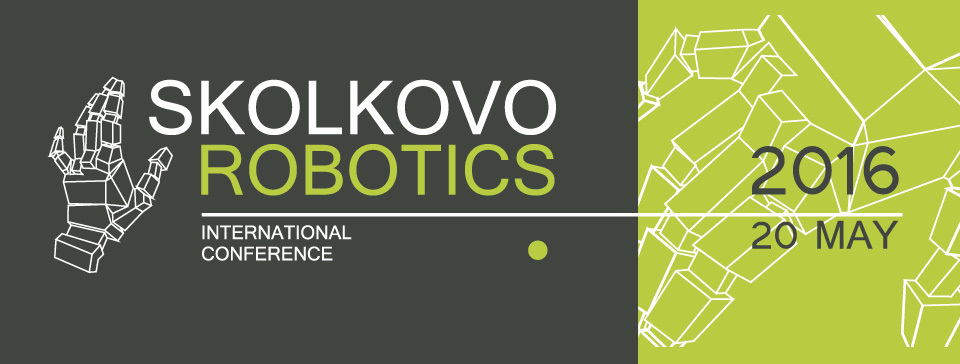
I decided to write an article about the exhibition Skolkovo Robotics 2016. I must say that quite a lot of projects were presented, but I will not consider everything - only the brightest. If it is interesting that there was more, then the full list of projects can be viewed on the official website of the Skolkovo Robotics International Conference 2016 .
The exhibition already presented the well-known Promobot from Promobot LLC and Webot from Vikron LLC. For those who are in the tank: Promobot is a universal robot designed to assist, advise and navigate. In other words - it is a robot promoter.
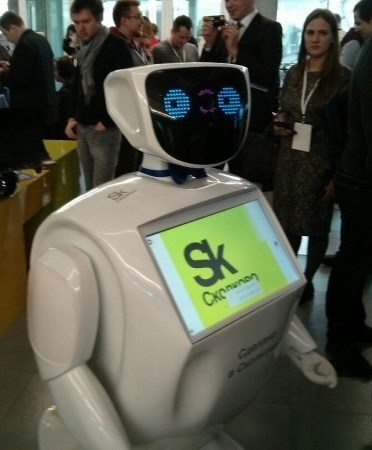
Webot is a telepresence robot that allows a person to perform actions at the location of the robot using a computer and the Internet. He moves, while giving the opportunity to remotely observe what is happening and talk to people.
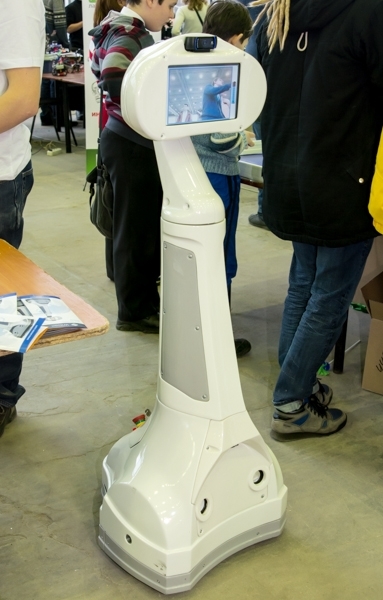
Impressed by the robot "Derevyaka" from Robodem - I even photographed it. “Derevyak” is also a promoter robot, also a “beggar”, plus he can be an assistant tutor. The basis of the robot are US patents. Works "Derevyaka" on the principle of neural networks, is controlled and configured in a special application from the tablet. Attached a video with a demonstration of work.
')

There was also a prosthesis from Kleiber bionix - Kleiber Solo. Kleiber Solo is a prosthetic human arm. The technology allows 12 ways to carry out a reliable seizure of objects weighing up to 4 kg to perform subsequent manipulations, as well as carry various loads weighing up to 15 kg, such as bags and bags. The main feature is that to install this prosthesis, it is not necessary to sew any chips into a person, that is, installing such a technology does not require surgical intervention. The method of force and compression is determined by the pressure of a person’s muscles. From a conversation with a representative, I realized that the technology would not be very expensive, and it was also possible to install a prosthesis to people with disabilities at the expense of the state.

I was impressed with the "woodcutter" from the company "Mivar" - "Murom-ISP".
“Murom ISP” is a hybrid of android and wheeled robot. It looks impressive, equipped with a non-iron. To the question how much such a robot costs, he received the answer: “Expensive, like a middle-class car.” In the promotional leaflet it was stated that the robot may have hands-manipulators, but they were not on it. The operating time of such a robot is up to 8 hours, the speed of movement is up to 15 km / h. You may also notice that a tablet screen is built into the top of the robot, to which it also displays various information.
I was still interested in the "brains" of the robot. A company representative said that the logic of the robot's behavior was created using special software "Roborazum". From the conversation, it turned out that the logical core “Razumator” lies at the core, which is also used in the program for creating expert systems Wi! Mi. I was very surprised that such a system could be implemented on it. Why surprised? The model for describing control of such a robot should not just be big - it should be huge. How do I know this? Everything is very simple: I already came across this product earlier and even wrote an article on “Habré” about this thing.
Also, a company representative added that they used the second version of this software - Wi! Mi 2.1. It turns out that the project recently had a press conference. I add a video, it describes the component of Murom in more detail.
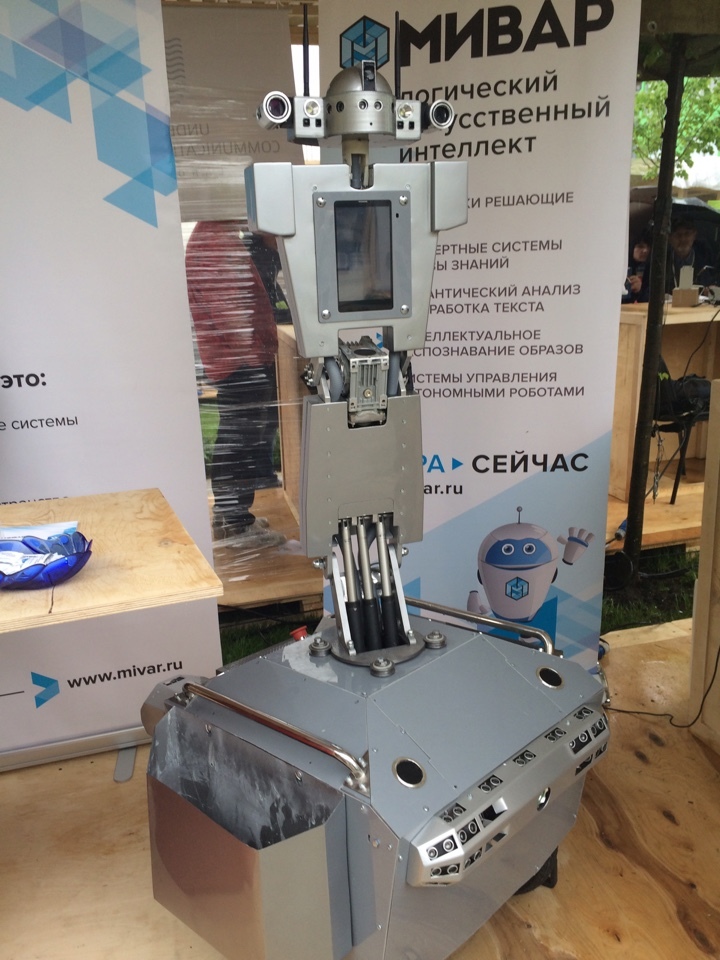
Another company "Mivar" presented mini-robots "Mipy". As I understand it, they are planning to use them in the framework of large multi-level complexes. That is, there will be a hefty robot the size of a Kamaz, a middle-class robot of the Murom-ISP type and small inexpensive sensor robots, which are sent for reconnaissance during emergency. These "Mips" just play the role of sensor robots for "Murom".
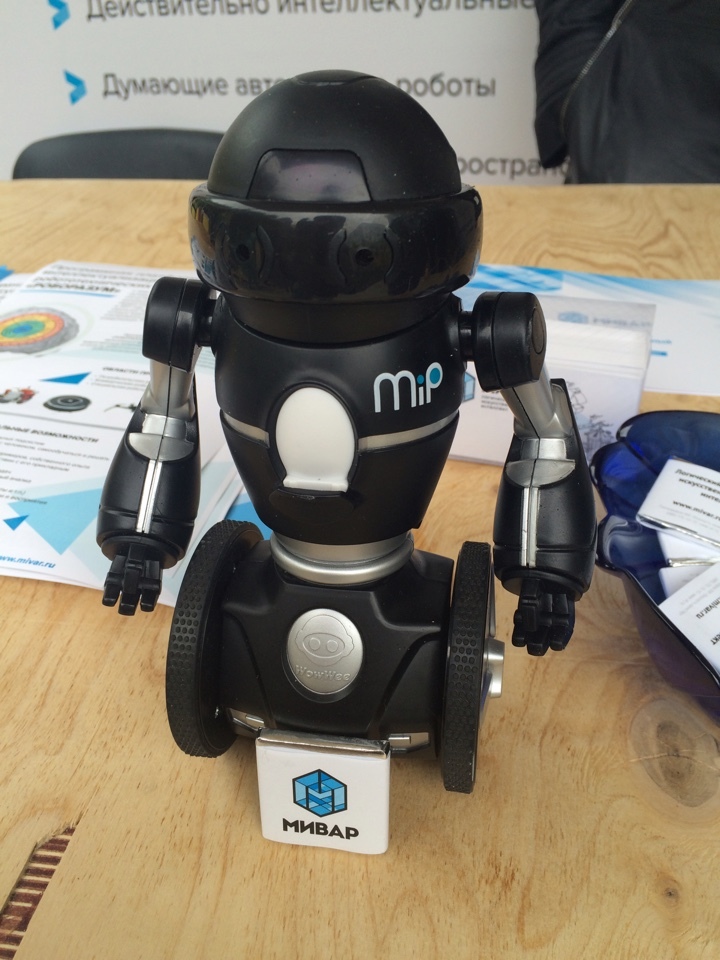
National Research Nizhny Novgorod State University. N.I. Lobachevsky at the exhibition presented exoskeleton robotic complex "Ilya Muromets." In short, “Ilya Muromets” is an exoskeleton of the lower extremities, which allows a disabled person to walk. Its main feature is a unique three-level control system. It includes a computer control interface directly by brain signals using an electroencephalogram, which, in fact, allows a person to move in this exoskeleton. Initially, I generally thought that this exoskeleton is applicable for lifting and carrying heavy various goods, as well as for the person to overcome long distances. But the employee at the stand corrected: this development is focused only on people with disabilities. On youtube you can watch the video, which presents the concept of this exoskeleton.
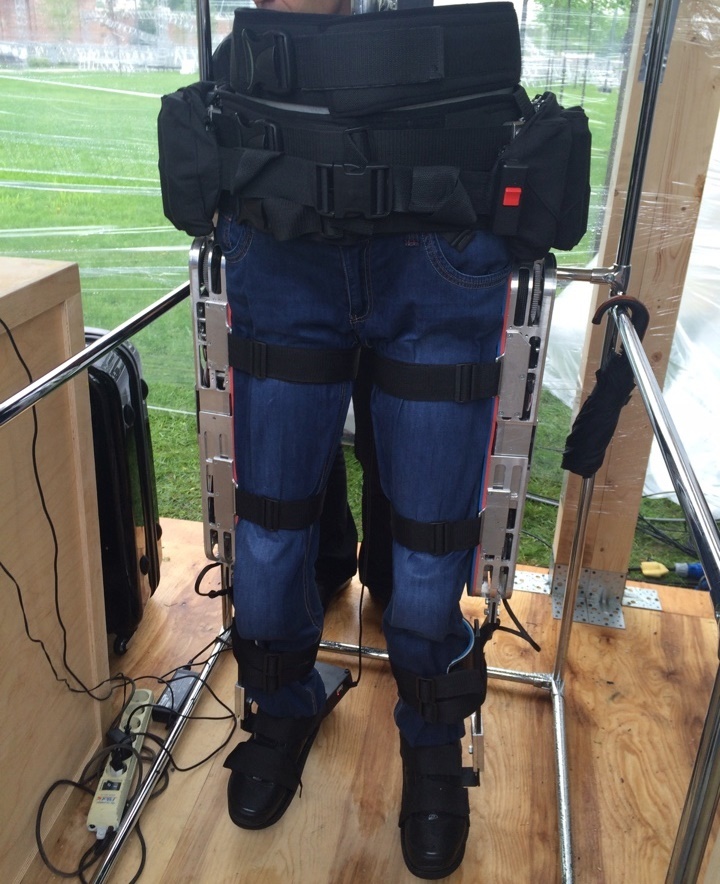
Also UNN them. N. I. Lobachevsky presented a system for recording and decoding the bioelectrical activity of the brain and muscles of a person (-1). In fact, this is another prosthesis. The guy in the photo synchronized with the prosthetic arm and manipulated it. It looked spectacular.
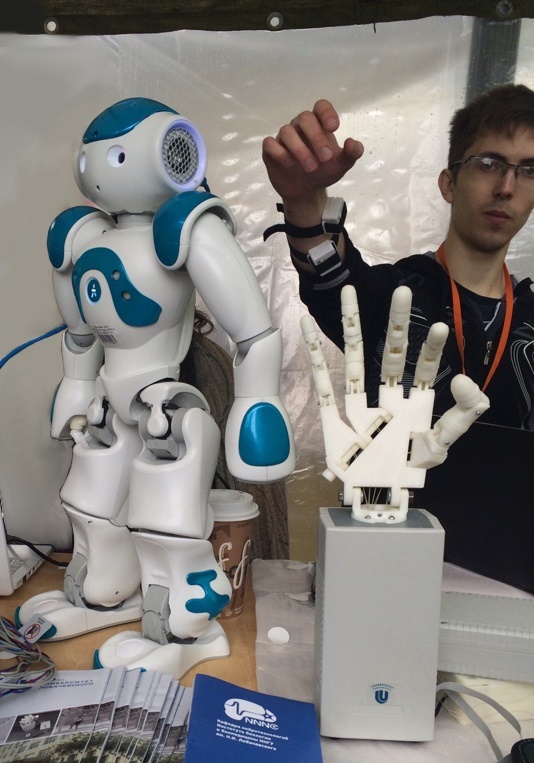
In general, I expected more from the exhibition of robots. It seemed to me that modern technologies were already close to the creation of a Terminator or a humanoid AI, but in fact ... in fact, we are still only at the beginning of this long journey.
Source: https://habr.com/ru/post/394371/
All Articles